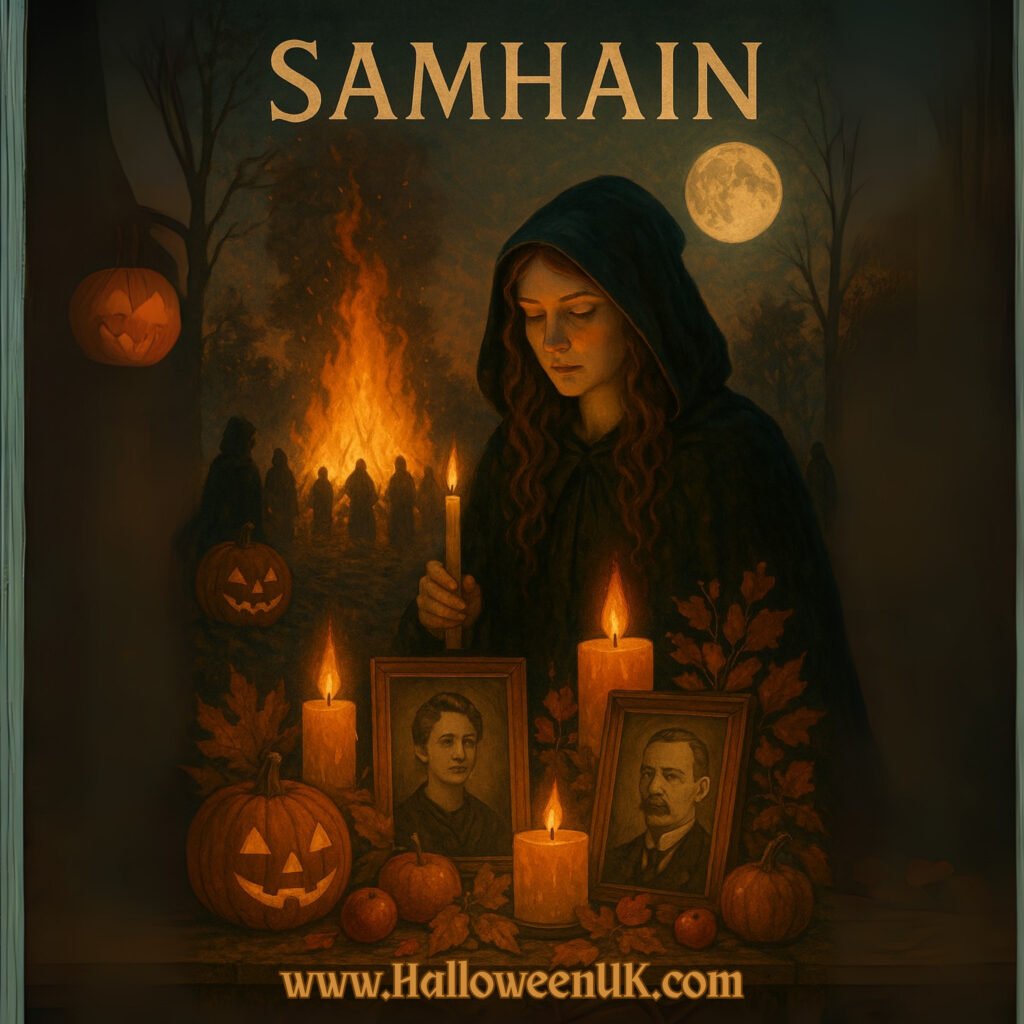
History, Traditions, and How to Celebrate the Celtic Festival
As Halloween approaches, many people eagerly plan costumes, decorations, and spooky parties. But beneath the candy and costumes lies a much older and deeper tradition—the ancient Celtic festival of Samhain. Pronounced “sow-in” or “sah-win,” Samhain marks a mystical time in the year that has profoundly influenced modern Halloween celebrations. In this blog, we’ll dive into the rich history of Samhain, explore its traditional customs, and offer ideas on how you can honor this powerful Celtic festival today.
What Is Samhain?
Samhain is a Gaelic festival celebrated from October 31st to November 1st, marking the end of the harvest season and the onset of winter, the “darker half” of the year. For the ancient Celts, who lived in Ireland, Scotland, and parts of Western Europe over 2,000 years ago, this was a liminal time—a moment when the veil between the living world and the spirit realm was at its thinnest.
During Samhain, it was believed that spirits and ancestors could cross over into the world of the living. This made it a sacred, and sometimes eerie, time filled with reverence and ritual. Samhain was not just a harvest festival; it was a moment of transition, death, and rebirth, where the past and future converged.
The History of Samhain
Samhain is one of the four major Gaelic seasonal festivals, alongside Imbolc (early February), Beltane (early May), and Lughnasadh (early August). It held great significance for the Celts, as it marked the completion of the harvest and the preparation for the long winter months ahead.
Historical records and folklore tell us that communities would gather for large bonfires on hilltops, which were believed to hold protective powers and help guide spirits. People wore costumes and masks—often made from animal hides and heads—to disguise themselves from wandering ghosts or malicious entities.
As Christianity spread across Europe, many pagan traditions merged with Christian observances. Samhain’s spiritual themes of death and remembrance helped shape All Saints’ Day (November 1st) and All Souls’ Day (November 2nd), which are days dedicated to honoring the dead. Over time, these celebrations combined and evolved into what we now know as Halloween.
Traditional Samhain Customs
Bonfires and Fire Rituals
The central symbol of Samhain was the bonfire. These massive fires were lit to cleanse, protect, and connect communities spiritually. People would extinguish their hearth fires at home and rekindle them from the communal bonfire, symbolizing renewal and protection.
Costumes and Disguises
To avoid detection by harmful spirits or to confuse them, people wore costumes made of animal skins or masks. This tradition is thought to be the origin of modern Halloween costumes.
Divination and Fortune-Telling
Samhain was considered an ideal time for divination. Ancient Celts would perform rituals to foresee the future, particularly about marriage, health, and death. Practices included reading runes, casting stones, or interpreting dreams.
Honoring Ancestors
Food and drink were left out as offerings for wandering spirits and ancestors. Family members would often set an extra place at the table to welcome the spirits of loved ones, inviting their presence and protection.
How to Celebrate Samhain Today
If you’re drawn to the deeper spiritual roots of Halloween or want to experience a meaningful autumn ritual, here are some ways to celebrate Samhain in a modern context:
1. Create an Ancestor Altar
Set up a small altar with photos, candles, and mementos of your ancestors or loved ones who have passed away. You can also include seasonal items like autumn leaves, pumpkins, or apples. Spend time reflecting on their lives and legacy.
2. Light Candles or a Bonfire
While an outdoor bonfire may not always be possible, lighting candles indoors can recreate the traditional Samhain fires. Use this time for quiet meditation, reflection, or honoring spirits.
3. Practice Divination
Try tarot cards, runes, or even journaling your thoughts and dreams. Samhain is a powerful time to connect with your intuition and explore your inner self.
4. Enjoy a Seasonal Feast
Prepare a meal using autumnal ingredients such as squash, nuts, apples, and root vegetables. You can even share the meal with friends or family, celebrating the bounty of the harvest.
5. Spend Time in Nature
Take a walk in the crisp fall air, noticing the changing leaves and the slowing of the natural world. Reflect on cycles of life, death, and renewal in your own life.
Why Samhain Still Matters
Samhain offers a chance to slow down, honor the cycles of nature, and connect with ancestors and the unseen world. In our fast-paced modern lives, these moments of reflection and remembrance are important for grounding and spiritual growth.
By celebrating Samhain, you tap into a tradition thousands of years old—one that embraces the mystery of life and death, the importance of community, and the beauty of seasonal change. Whether you see it as a spiritual practice or a cultural heritage, Samhain enriches the Halloween season with depth and meaning.
